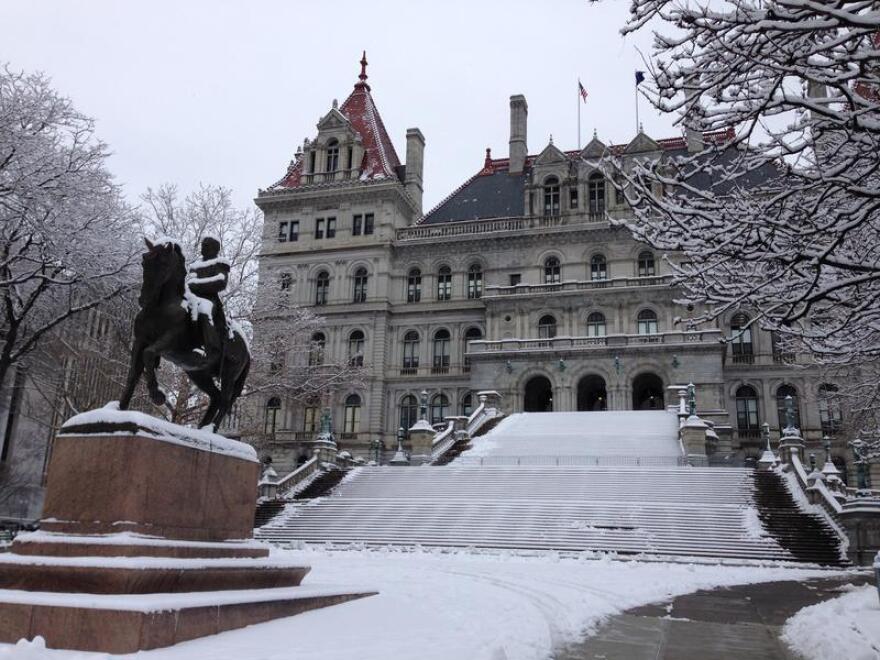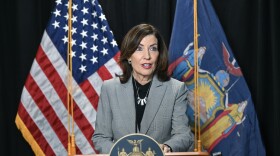The state legislature’s one-house budgets make some changes to Gov. Andrew Cuomo’s $163 million proposal to offer free tuition at public colleges in New York to some middle-class students.
Cuomo’s plan would have the state pay the tuition at public colleges and universities for students who have a combined family income of up to $125,000 a year when the plan is fully phased in in two years.
It does not cover room and board, books and mandatory fees, which can cost students up to twice as much as the $6,470 a year in tuition costs at the State University system, and $6,330 at the City University system.
Cuomo’s point man for the free tuition plan, Jim Malatras, spoke at a forum sponsored by the Empire Center, a budget watchdog group.
“This is not free college,” Malatras said. “This is free tuition.”
Malatras until very recently was Cuomo’s chief of staff; he is now president of SUNY’s Rockefeller Institute.
The plan, known as the Excelsior scholarship program, includes incentives to ensure that more students graduate on time, including requiring that students complete the full-time requirement of 30 credits per year.
Marc Cohen, the Student Assembly president for the State University of New York, said the plan addresses the fact that a bachelor’s degree has become the new high school diploma and is necessary for most types of decent-paying employment.
But he said he wishes there were more in it to help recent graduates who owe tens of thousands of dollars in student debt, among other things.
“More needs to be done,” Cohen said.
A negative in the eyes of New York’s more than 100 private colleges is that they are completely left out of the plan.
“It’s really hard to compete with free,” said Mary Beth Labate, the head of the Commission on Independent Colleges and Universities.
Labate predicted that some private colleges will close and others will lay off faculty, affecting the already unsteady upstate economy. She said some private colleges are already postponing planned capital projects in anticipation of the potential loss of students to public colleges.
Labate said it would be better to expand New York’s existing Tuition Assistance Plan, or TAP, to provide more money and to cover New Yorkers with higher incomes. TAP can be used at both public and private schools.
Malatras said the governor’s plan is a starting point and expects it to be changed in the upcoming budget negotiations over the next few weeks.
“I’m sure there’s going to be tweaks, changes and enhancements to that program,” Malatras said.
Senate Republicans, in their one-house budget resolution, alter the governor’s free tuition plan.
They take the suggestion of the private colleges and instead enlarge the existing TAP program. The GOP plan would increase the maximum aid award to $5,500 a year, and increase income eligibility to $125,000 a year. The Senate plan would add new credit requirements to TAP to encourage graduation in four years.
Assembly Democrats, in their budget plan, adopt much of the governor’s proposal. Speaker Carl Heastie said the proposal would increase the income eligibility to families making $150,000 a year.
“Under our plan, almost 70 percent of resident students’ families will be able to have their children attend college in New York tuition-free,” Heastie said.
The Assembly plan also expands TAP to allow part-time students to be eligible for the aid, and addresses student debt, offering a plan to help graduates who owe money to refinance.








